I’m a fan of TorrentFreak, it’s one of those rare blogs that streams interesting news on a very specific subject and openly acknowledges its biases while providing the reader with a ton of information to fend for themselves. In fact, I have come to think of TorrentFreak as one of the outposts in a war over our culture and piracy that goes generally unacknowledged in the educational sphere. We talk a lot about licensing and open resources in educational technology, but I think the 5000 pound elephant in the room that is the internecine battle over cultural distribution for the 21st century is being waged silently on the margins.
Interestingly enough, Ben Jones has recently completed Part 2 of a TorrentFreak exclusive on “Tackling College Piracy” (see Part 1 here). In it he touches on the College Opportunity and Affordability Act of 2008 which recently passed. The article examines how it is being enforced at one particular campus, highlighting what colleges and universities will be dealing with in regards to deterring filesharing (which isn’t always illicit!). Here is the wording of the act as it specifically pertains to illegal filesharing on campus:
Section 495
Includes among the duties of the Advisory Committee on Student Financial Assistance, monitoring the adequacy of total need-based aid available to low- and moderate-income students. Authorizes the Committee through FY2011.
(Sec. 495A) Requires IHEs to: (1) make information available to their students and employees regarding the illegal downloading and distribution of copyrighted materials (campus-based digital theft); and (2) develop plans to provide alternatives to, and deter, such illegal downloading.
Authorizes the Secretary to award competitive grants to IHEs for the implementation of programs to prevent the illegal downloading and distribution of intellectual property.
Authorizes appropriations for such grant program for FY2009-FY2013.
Interestingly enough, deterring illegal downloading of files in Section 495 has become the responsibility of universities and colleges. They need to “develop plans to provide alternative to, and deter” illegal filesharing. And while the repercussions of what happens if they refuse to comply are still unclear, the Electronic Frontier points out there is still some MPAA pirate lobbyists that believe that the withholding of federal funding to schools that don’t comply is totally appropriate. A thought more disturbing given the gross inaccuracy of the MPAA takedown notices as they stand now with bitTorrent clients, how do they know? And, moreover, why is it the universities and colleges’ responsibility to police this activity for the MPAA and RIAA? (It’s their market, and they have profited tremendously off of it.) Such deterrents for universities and colleges will ultimately lead to industry standard traffic shapers that cost a fortune and will most likely fail to accomplish their intended goal. Why the hell was this written into a federal educational act that could potentially cut aid to schools and students wrongly accused of illegal downloading?
Well, maybe not so much silently as surreptitiously (to refer back to the first paragraph after that long digression), for ambiguous, fear-inspired verbiage like that found in the College Opportunity and Affordability Act just further puts the entertainment industries in a position of malevolent power that will ultimately prove technically futile, but tax many a college and college student in the mean time. Yet, I firmly believe that that is exactly the point of this legislation, it is a temporary stay during this particular moment of uncertainty for content distribution mechanisms. These industries are depending on fear and terror while they feerishly work with ISPs, economists, programmers, and network engineers to develop the new economy/currency through which they can conquer and control the distribution of the culture they package. And this brings me to the point of this post 🙂
I read for the first time today about a new technology known as P4P, or also known as Proactive network Provider Participation for P2P. To quote Wikipedia:
P4P, or Proactive network Provider Participation for P2P, is a method for internet service providers (ISPs) and peer-to-peer (P2P) software to optimize peer-to-peer connections. P4P is being touted as a method that can save an ISP significant costs – the current P2P model may have a peer sending data across the world while a nearby peer is receiving data from across the world – when theoretically they could be transmitting the data locally. Beyond saving an ISP money, P4P proponents argue that using local connections also speeds up download times for P2P downloaders by between 2 and 4 times.
The P4P working group has participants from the ISP, Movie/Content, & P2P industries. It is focused on helping ISPs handle the demands of large media files and enabling legal distribution – they are building what they believe will be a more effective model of transmitting movies and other large files to customers. The working group is not endorsing or opposing the illegal download of copyright material, commonly associated with P2P networks.
This working group is basically coming up with a method that will supposedly relieve the strain on the poor ISPs (a theme we will revisit), while enabling “legal distribution.” Interesting how the next line is sure to point out the working group “is not endorsing or opposing the illegal download of copyright material.” If that was really the case, why stress “legal downloads” immediately before this disclaimer? Why not just say downloads?
Anyway, this new technology sounds in some ways to Harvard’s Tribler P2P experiment. The article in TorrentFreak that introduced me to P4P, and its potential underbelly, led me to this recent press release from the University of Washington about their active involvement, along with Yale University, helping the P4P working group come up with a solution that seems like it will ultimately empower the media and content distributors.
Here is a bit from the newsletter at UW which you can find in its entirety here:
Peer-to-peer networking, or P2P, has become the method of choice for sharing music and videos. While initially used to share pirated material, the system is now used by NBC, BBC and others to deliver legal video content and by Hollywood studios to distribute movies online. Experts estimate that peer-to-peer systems generate 50 to 80 percent of all Internet traffic. Most predict that number will keep going up.
Tensions remain, however, between users of bandwidth-hungry peer-to-peer systems and struggling Internet service providers.
To ease this tension, researchers at the University of Washington and Yale University propose a neighborly approach to file swapping, sharing preferentially with nearby computers. This would allow peer-to-peer traffic to continue growing without clogging up the Internet’s major arteries, and could provide a basis for the future of peer-to-peer systems. A paper on the new system, known as P4P, will be presented this week at the Association for Computing Machinery’s Special Interest Group on Data Communications meeting in Seattle.
“Initial tests have shown that network load could be reduced by a factor of five or more without compromising network performance,” said co-author Arvind Krishnamurthy, a UW research assistant professor of computer science and engineering. “At the same time, speeds are increased by about 20 percent.”
“We think we have one of the most extensible, rigorous architectures for making these applications run more efficiently,” said co-author Richard Yang, an associate professor of computer science at Yale.
The project has attracted interest from companies. A working group formed last year to explore P4P and now includes more than 80 members, including representatives from all the major U.S. Internet service providers and many companies that supply content.
Notice the “struggling Internet Service Providers” sentiment again, compared to the greedy and voracious P2P user—what an objective image of the situation. And then we have the University of Waahington and Yale University providing this working group of Media Lobbyists and ISPs with a potential mean for controlling filesharing and endangering Net Neutrality. This is the real warzone in technology at the moment, the earch for the means by which to monetize and commodify bandwidth and media distribution. David Wiley mentioned the New York Times opinion piece that frames bandwidth providers as OPEC 2.0. Stating that “Americans today spend almost as much on bandwidth — the capacity to move information — as we do on energy.” Yet, these are the very same, poor struggling folks whose profit are being drained by those greedy P2Pers. So, what do they do? They team up with the MPAA, RIAA, and other content providers, put together a working group and employ the intellectual talent from the very same universities around the country that they obsessively target for illegal downloading activity. Insane!
It reminds be of the emergence of American Studies departments in the US during the 1950s, they were enclaves for Cold War rhetoric and nationalism, a space for defining the essential and unique qualities of the US that make it special, unique, superior, and somehow immune to the commun ist disease. Well, let’s face it, these companies are using universities and colleges as the battle/testing grounds for both shaping minds and inspiring fear in the rising adults while at the same time depending on these institutions’ intellectual firepower to help them re-imagine a new means to control and commodify the distribution systems they ignored for decades while the future moved forward. I find it all very disheartening, and while P4P may end up being a bust (it probably will be), the long, drawn out siege upon universities and colleges by ISPs, the entertainment industry, and now government legislation continues.
Well, it’s 1:26 am on August 25th, officially the first day of classes for the new school year at UMW, and this is how I’m starting it. I’m tired of this bullshit, and I’m gonna blog them as much as I can because the fist is getting tighter and we need to become more and more like sand.





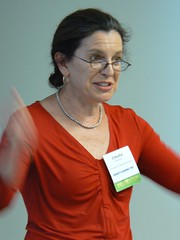








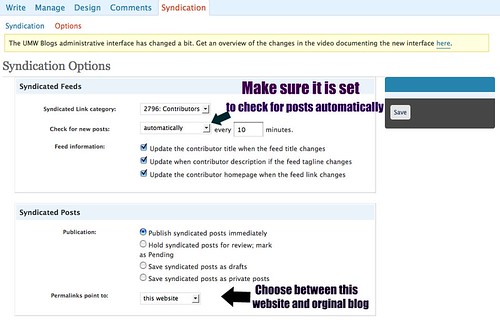

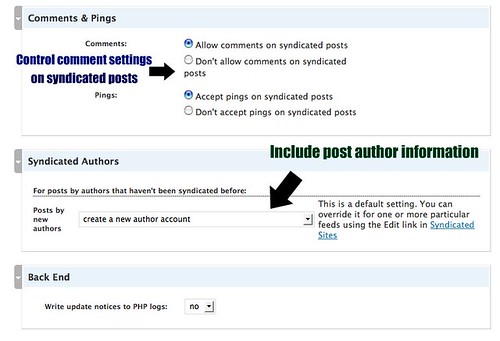
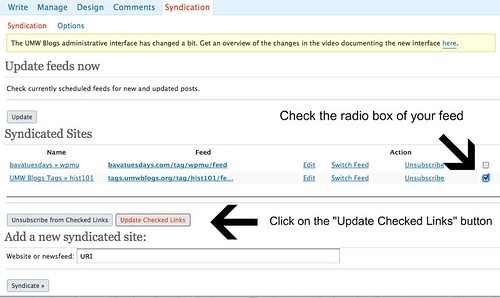
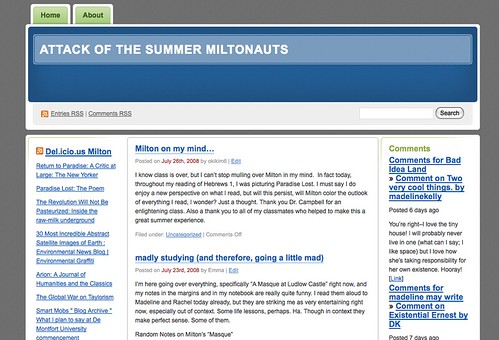
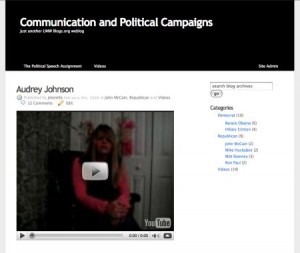

WPMu Sitewide Comment Tracking
I have been mentioning DSader a lot lately on this blog, and that’s mainly because I have been deep into WordPress Multi-User mode for a couple of weeks now. And between the upgrade to 2.6 and the general overhaul of plugins, themes, etc., I find I’ve devoted no insignificant amount of time to plugin hunting –a truly enjoyable activity. For many of my most valuable WPMu plugins, I continually find I am utilizing DSader’s work. He wrote the following plugins that I can name off the top of my head: Userthemes (a must), Sitewide “Three-in-One” Multi Widget panel, Toggle Admin Menus Sitewide, and the indispensable More Privacy Options, to name a few.
So, there is no question DSader has been a veritable mensch when it comes to sharing with the WPMu community, and I’d like to say thanks. But before I even can he comes out with an updated version of his Sitewide Comment Tracking plugin for WPMu that reminds me just how deeply indebted I am to his work. If you haven’t tested it, I highly recommend it. It tracks the comments you have left on numerous blogs within the WPMu community. So, for example, If I leave comments on various blogs, I can track them from the Comments–>My Comments tab. It provides an awesome interface to quickly scan where you’ve commented and who has responded, an amazingly powerful feature for a controlled, yet deeply distributed architecture like WPMu.
Here’s what it looks like:
DSader's My Recent Comments plugin for WPMu
Think about it, this is an amazing way to let faculty and students know how they can track response to their comments easily, something which isn’t all that easy in the regular blogosphere. So an engineered improvement to make the community potentially more manageable. And so many of DSader’s plugins are just like that, it’s as if he were programming for UMW, he comes from an educational setting and it’s amazing how many of our needs and desires are met and satisfied by his work
Update: While writing this I received an email from him telling me the Sitewide 3-in-1 Widget panel has been updated, with a bug or two fixed, Is DSader sick or what? What can I say, it’s people like him that make this whole thing so much funner and cooler. Thank you, thank you, thank you!!!